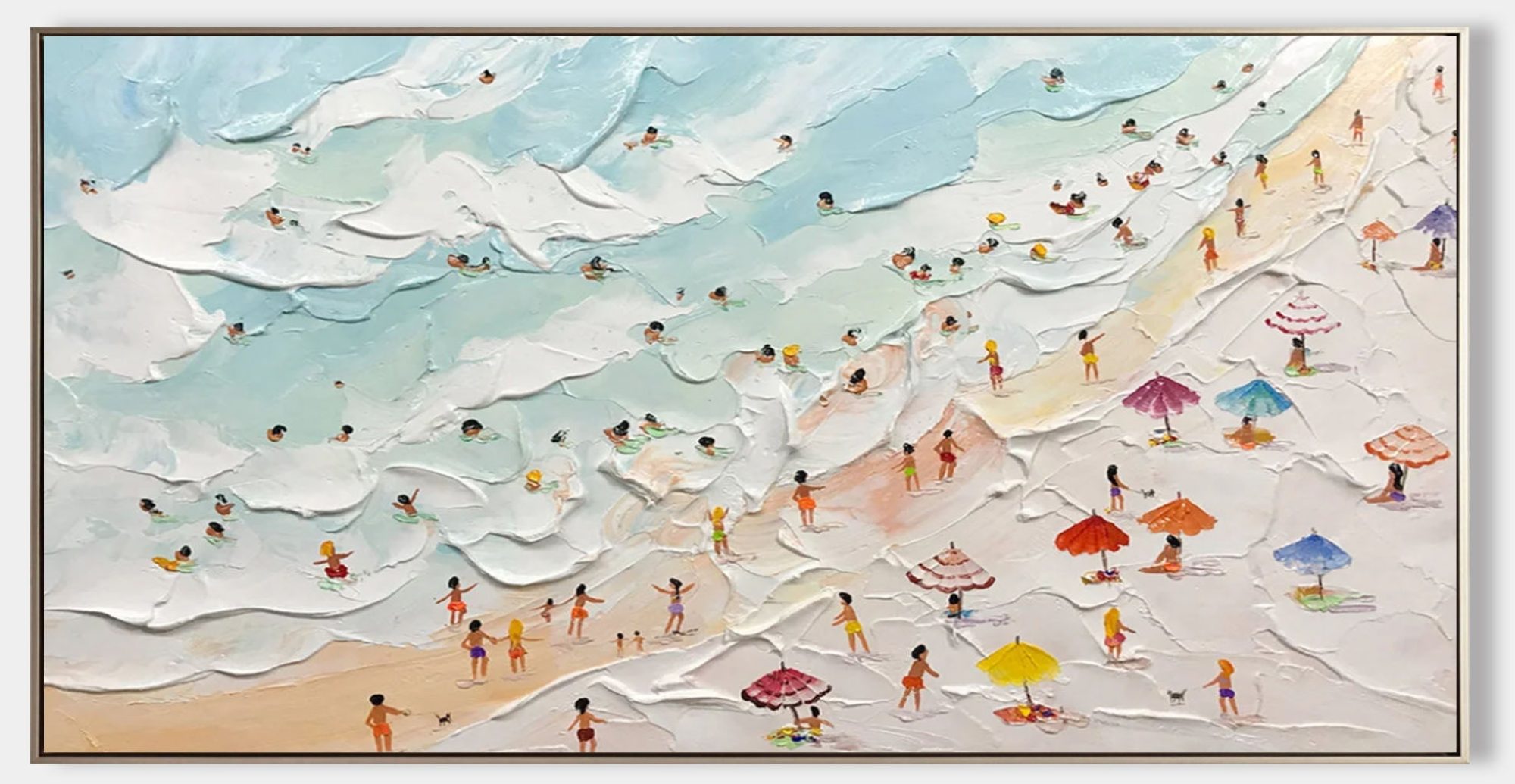Introduction: The Silent Conversation with Art
Can a painting know who you are before you do? When standing in front of OkArty’s Reflecting the Self, many viewers feel more seen than they expected. That is the mystical quality of abstract art—it mirrors the undefined parts of our psyche.
Pablo Picasso once stated, “Art washes away from the soul the dust of everyday life.” In this sense, abstract works like Reflecting the Self are less about beauty and more about awakening—a cleansing of mental noise to reveal emotional truth.
Abstract Art as a Psychological Mirror
Unlike portraits or landscapes, abstract oil paintings reject objective storytelling. Instead, they prompt questions: Why do I feel this way when I look at this? What does this color trigger in me? These responses are often subconscious and intimate.
Reflecting the Self embodies this mirror effect. Its layered textures, both soft and chaotic, evoke introspective moods. There’s no narrative, no figures—only mood and motion. And that’s where its power lies.
This painting challenges the viewer not to identify what it is—but what they are.
The Unknown Within: Embracing Abstract Ambiguity
Philosopher and painter Paul Klee once wrote, “Art does not reproduce what we see; it makes us see.” In Reflecting the Self, we see emotions with no words. The brushstrokes, sometimes blurred and sometimes sharp, reflect inner contradictions: peace and unrest, clarity and confusion.
For those who practice journaling, therapy, or introspection, this type of visual ambiguity resonates. The mind, like the painting, is never static. It evolves, contradicts itself, and reflects the external world through internal lenses.
This work doesn’t answer—it listens.
From Canvas to Consciousness: A New Way of Seeing
In a digital world saturated with literal meaning and visual overload, abstract oil paintings give us a much-needed break. They don’t demand logic. Instead, they give permission to explore, feel, and interpret.
Reflecting the Self serves as a visual meditation—an anchor for people seeking a break from structure. Its undefined spaces allow the imagination to stretch. For some, it may represent transformation. For others, it may stir vulnerability or quiet strength.
Whatever the interpretation, it is always deeply personal.
Integrating Abstract Art into Daily Life
Modern living spaces are increasingly embracing emotional design. People want more than decoration—they want meaning. That’s where pieces like Reflecting the Self shine.
In a minimalist home, it provides emotional contrast. In a creative studio, it sparks open-ended thinking. In a therapist’s office or meditation space, it supports quiet reflection.
Abstract art isn’t a statement—it’s a question. One that changes with each glance.
Why This Painting Matters Today
In a post-pandemic world full of global tension and identity shifts, more people are turning to abstract art not just for style, but for healing. Reflecting the Self is not just a painting—it’s a space to process, dream, and be.
The work is timeless because it doesn’t define the viewer—it invites the viewer to define it. And in doing so, we may uncover things within ourselves that words fail to express.
Conclusion: You Are the Subject
While traditional paintings depict subjects, Reflecting the Self makes you the subject. The more you return to it, the more it reveals—not about the artist, but about you.
As Agnes Martin put it, “Art is the concrete representation of our most subtle feelings.” In this way, Reflecting the Self is a gift. Not just of color and form, but of perspective and introspection.
